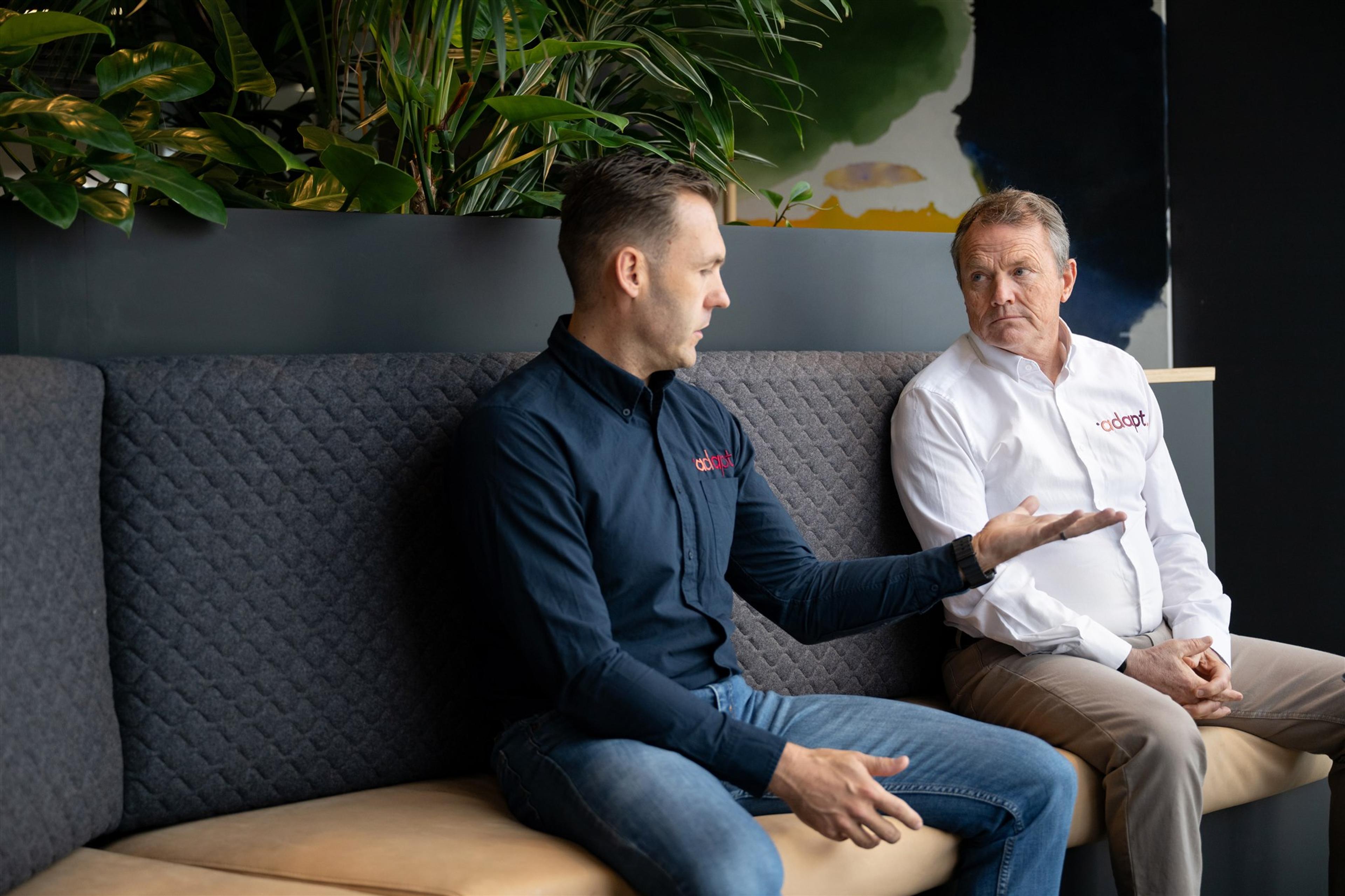The Challenge of Building a High-Performing Leadership Team

A high-performance culture is characterised by shared values, clear objectives and an environment that promotes peak productivity. Unlike traditional hierarchical structures, this culture emphasises adaptability, collaboration and empowerment. By aligning team members with common goals and encouraging consistent actions, businesses can create teams that not only meet expectations—but exceed them.
At adapt, we've seen first-hand how a high-performance culture can transform not just teams, but entire organisations. It's about more than just getting results—it’s about creating the conditions where individuals thrive, collaboration is natural, and innovation becomes the norm.
In a world where business challenges evolve rapidly, the need for adaptive, resilient, and high-performing leadership teams has never been more critical. But building these teams isn’t simple. It requires intention, structure, and a culture that actively supports excellence.
This article focuses on the challenges that businesses can face when building high-performing leadership teams—and what’s needed to overcome them.
Why High-Performance Teams Matter
High-performance leadership teams consistently deliver results, adapt quickly and lead cultural change within businesses. What sets them apart isn’t just skill or experience—it’s the environment they operate in: a high-performance culture.
This kind of culture is marked by shared values, openness, accountability and trust. But building that environment can be complex and may involve rethinking how leaders in your organisation behave, communicate and hold themselves accountable.
The cultural challenge - moving beyond hierarchy
Traditional leadership often relies on rigid structures and top-down decision-making. In contrast, high-performance teams thrive on empowerment and shared ownership.
The challenge? Shifting from control to trust.
- Leaders must actively support and empower others to succeed, and steer clear of micromanagement.
- Clear direction is still vital—but so is psychological trust and safety, where team members feel free to speak up, challenge ideas and present suggestions.
- Shared values and purpose must replace any individual agendas and silos.
Changing culture isn’t a quick fix. It requires daily commitment, leadership modelling and systems that reinforce the behaviours you want to see.
Common Challenges
1. Building trust and psychological safety
Trust is the foundation of high performance. But it doesn’t develop by chance.
Leaders must create environments where team members feel safe to:
- Offer feedback in a positive and constructive way
- Admit mistakes without fear
- Raise concerns without being sidelined
Psychological safety encourages honest conversations, better decision-making and higher engagement. It can take time to build this, particularly when a less open culture has been engrained for a while.
How to:
- Encourage leaders to model vulnerability and openness
- Use structured check-ins and actively encourage feedback
- Reward transparency, not just results
2. Aligning purpose and values
If team members aren’t aligned around a shared purpose and set of values, even the most capable leaders will struggle.
Teams suffer when:
- There’s no clear direction or vision
- Personal agendas come before team goals
- Values are unclear or inconsistently demonstrated
How to:
- Define your leadership team’s “why”—what unites them?
- Revisit core values and check whether behaviours align
- Connect strategic goals to your vision and purpose
3. Clarifying roles and expectations
Even experienced leadership teams can become dysfunctional if roles are unclear. Ambiguity leads to duplication, confusion and lack of accountability.
Clarity gives people confidence and allows teams to:
- Move faster with fewer conflicts
- Encourage collaboration over competition
- Enables good decision making
How to:
- Ensure every leader knows their accountabilities—and where collaboration is needed
- Define shared success measures and decision-making rights
- Implement structured systems to ensure follow-through
4. Driving accountability without blame
High-performing teams don’t avoid accountability—they embrace it. But in many leadership teams, holding each other to account can be uncomfortable or inconsistent, especially if the culture hasn’t normalised open, constructive feedback.
In low-accountability environments:
- Feedback is often avoided
- Performance gaps are met with defensiveness rather than reflection
- Teams lack a clear system for tracking progress or adjusting course
How to:
- Build a culture where feedback is expected, not feared
- Create regular touchpoints to track progress and address issues
- Frame accountability as a tool for learning and collective success – not criticism
5. Navigating complex team dynamics
Leadership teams are often made up of high performers with strong opinions. That’s a strength—but it can also lead to friction.
Common issues include:
- Competing priorities between teams
- Lack of trust across functions
- Conflict avoidance (or passive-aggression)
High-performing teams confront conflict directly and constructively. They listen deeply, challenge ideas (not people), and prioritise the whole business above individual silos.
How to:
- Facilitate open conversations about team dynamics
- Build norms around healthy debate and shared problem-solving
- Invest in leadership team coaching, not just individual development
Strategies for Developing High-Performing Leadership Teams
1. Prioritise strong, values-driven leadership
Leadership is the foundation of any high-performing team. Beyond giving direction, great leaders inspire, empower and model the behaviours they want to see. They build trust through empathy, transparency, and future-focused thinking—creating an environment where teams feel supported and motivated to perform at their best.
Effective leaders:
- Align teams around a clear vision and shared values
- Provide regular feedback and mentoring
- Foster psychological safety and open communication
2. Fostering open communication and inclusivity
Open and transparent communication is vital for team cohesion. Regular meetings, feedback sessions and open-door policies encourage the exchange of ideas and concerns, leading to better decision-making and problem-solving.
Inclusivity is about more than representation. It’s about ensuring every voice is heard and valued—and that teams benefit from diverse experiences and perspectives.
Strategies that work:
- Rotate leadership in meetings so different voices are heard
- Use structured feedback tools to ensure inclusive input
- Create shared platforms for communication and collaboration
High-performing leadership teams work cohesively across functions, genders, backgrounds and belief systems. They leverage those differences to make better decisions and foster creativity.
3. Promoting continuous learning
A culture of continuous learning encourages leaders to seek improvement and adapt to new challenges. High-performing teams see mistakes as learning opportunities, not failures.
Businesses that invest in development build teams that are:
- More resilient to disruption
- Better equipped to solve complex problems
- Positioned to grow their own leadership pipeline
Practical ways to build a learning culture:
- Set aside time after projects to reflect on what worked and what didn’t
- Recognise those who question assumptions or bring fresh ideas
- Celebrate thoughtful experimentation—even when results are mixed
4. Utilising performance metrics
Culture is often invisible—until something goes wrong. That’s why measuring cultural health is critical. Without measurement, “culture drift” can occur—where behaviours slip and engagement declines.
What should you measure?
- Employee engagement: Are people energised and committed?
- Team alignment: Do they understand shared goals and values?
- Leadership behaviours: Are leaders modelling the culture you want?
- Use Objectives and Key Results (OKRs) to align goals and behaviours, for example:
Objective: Build a more collaborative leadership team
Key Results:- 100% of leadership team members contribute to monthly cross-functional sessions
- Team trust score improves by 10% in the next quarterly survey
- Reduced duplicated projects between departments
Next Steps
Building a high-performing leadership team is a multifaceted challenge that requires deliberate effort and strategic planning. But the payoff is substantial: stronger alignment, better decision-making, higher engagement, and a more resilient organisation.
High-performing leadership teams don’t happen by accident. They’re the result of clear intention, disciplined effort, and a culture that prioritises trust, collaboration, and accountability.
At adapt, we help SMEs build the foundations for lasting performance—because when your leadership team thrives, your whole business benefits.
Take the first step today and reach out to our team.



